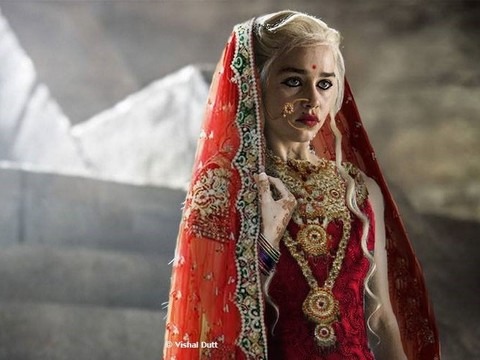In this post, Ritika Pant, one of the researchers who received the Social Media Research grant for 2016, introduces her proposed work.
“If you are watching a film on your television is it no longer a film because you are not watching it in a theatre? If you watch a TV show on your iPad is it no longer a TV show? The device and the length are irrelevant…It’s all content…and the audience has spoken, they want stories. They’re dying for them. And they will talk about it, binge on it, carry it with them on the bus…Tweet, blog, Facebook, make fan pages, silly GIFs and ….engage in it with a passion and an intimacy that a blockbuster movie could only dream of.”
-Kevin Spacey[1]
Netflix, the world’s most popular online streaming service launched in India this January elicited mixed reactions. While avid viewers of American and British TV series are thrilled by the move, cable operators and online service providers like HOOQ and Ogle anticipate tough competition. Factoring in low internet bandwidth and monthly subscription fees, the success of Netflix in India is still a fuzzy picture at the moment. In an industry that is gradually moving towards digitization, this launch is clearly a game-changer for both television broadcasters and their audiences. Therefore, in this project, I seek to engage with the interactions between an older medium of broadcast (television) with a newer means of distribution (internet) and explore how this new interface is introducing us to what is termed as a “post-broadcast”[2] moment.

Home page – Netflix India. Source: www.netflix.com/in/
Jeanette Steemers (2014) predicts the demise of linear television and scheduled viewing patterns with the internet providing online video streaming platforms like Netflix, Hulu, and Amazon Prime etc[3]. The digitization of content and the steady penetration of the internet predict the disintegration of the top-down model of broadcasting, thus making way for a new international distribution system of television content. This international distribution system has also led to the formation of a transnational/global audience that can be identified beyond the geo-cultural/geo-linguistic divide. This project proposes to study the newer patterns of television content distribution and consumption amongst Indian audiences made possible by New Media and digital infrastructures in a “post-broadcast” era.
With Indian audiences being constantly exposed to transnational television content in the form of popular American and British television series like Game of Thrones, House of Cards, Downton Abbey, or even Urdu soap operas like Zindagi Gulzar Hai and Humsafar, they have found newer ways to consume, distribute and engage with this content through the online medium. The content that is broadcast on national television is also alternatively watched on online forums like YouTube, Hotstar etc. Waqt Ne Kiya Kya Haseen Sitam, a Pakistani soap opera whose plot is based on India-Pakistan partition, telecast on Zindagi, an Indian entertainment channel, is a case in point. Because the series deals with a sensitive issue, Zindagi played an edited version of the series on national television to avoid censorship issues. But evident ruptures in the narrative made it impossible for the audiences to follow the Indian version of the series on television; therefore, they went back to the Pakistani version, originally titled Dastaan, which is available online. While there are no episodic uploads of Waqt Ne Kiya Kya Haseen Sitam, one can find full-length episodes of Dastaan, which were available on YouTube even before the Indian telecast. The change in the title also signifies how aware the broadcasters are of online traffic, to avoid which they changed the original series title.
Downloading content off the internet and indulging in marathon viewing or “binge watching” defies the idea of scheduled programming for television and also opens up debates regarding the network of pirated television content, especially in the Indian context. Websites like www.piratebay.com or www.extratorrent.com find heavy traffic as TV fans download content off these sites. One reason for this is traced to the delayed programming schedule of international TV series in India. Influenced by the online viewing habits of audiences, a newly launched English entertainment channel, Colors Infinity, not only promised its viewers instant premieres of latest international series but also introduced LIVE binge on Indian television by broadcasting ten back-to-back episodes of its latest property Mad Dogs premiered on January 23, 2016[4]. To watch a TV series uninterrupted by commercial breaks and as per one’s convenience of time and place has changed the way television content is consumed. The episodic nature of TV series, the segment break-up of a half hour episode to include commercial breaks, and most importantly, cliffhangers, are now losing importance and changing the aesthetic appeal unique to the medium.

Home Page – Colors Infinity. Source : www.colorsinfinity.com
Having recognized the potential of social media, television channels now outsource their digital media projects to specialized agencies. The digital presence of broadcast companies is strongly felt through their Facebook pages, YouTube channels, organizational websites, Twitter handles, Instagram accounts and personalized apps. The content for social media is also created differently and made user-friendly by uploading episode highlights and webisodes[5] containing short clips of full-length episodes for easy buffering. In the contemporary mediascape, television content is no longer limited to a television screen but expands to multiple screen formats including mobile phones, laptops or tablets. The viewing also takes place in mobile environments as opposed to the fixed space of a living room. Moreover, the content that is originally produced for television audiences, when consumed via the online/digital medium, transmutes televisual aesthetics and produces a new kind of aural and visual experience that is specific to contemporary convergence culture.

A character named Daenerys Targaryen from the popular TV series Game of Thrones. Source: www.whatculture.com
Lastly, television fans, who in their diverse socio-cultural backgrounds interact with transnational content online, extrapolate different significations for the same content. My attempt in this project is also to understand online fan cultures (with special reference to Indian television) through an analysis of the enormous cultural production that takes place in the form of memes, spoofs, GIFs and fan-fiction, and trace important sites on the internet through which a transnational audience accesses, interacts with, and creates new content that converges the two media. This project is a part of my ongoing doctoral work on Transnational Television in India, wherein, I assume New Media and digital environments as critical to the proliferation of transnational television. It is within this continuously shifting paradigm of the televisual and the digital that I situate my project and desire to explore the “post-broadcast” moment in the contemporary phase of Indian television. Through virtual ethnographies, interviews, case studies of specific TV shows and websites, my endeavour will be to document the changing mediascape that oscillates between television and the internet where the two converge and influence each other.
Notes:
[1] Hollywood actor and the star of Netflix House of Cards television show, Kevin Spacey spoke at the 2013 International Television Festival. See https://www.youtube.com/watch?v=P0ukYf_xvgc
[2] The term “post-broadcast” era also referred to as “post-network” era was coined by Amanda D. Lotz in her book The Television Will Be Revolutionized (2007). She points out that the post-network era is to be defined by the digitization of media content and the convergence of television and new media
[3]Steemers, Jeanette. “Selling Television: Addressing Transformations in the International Distribution of Television Content.” Media Industries Journal, 2014: 44-49.
[4] See http://tvnews4u.com/tvnews-exclusive/colors-infinity-introduces-live-binge-to-indian-television/
[5] A webisode refers to a shorter version of an original episode derived from a television series, made for online viewing.
